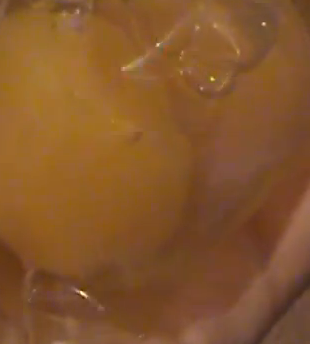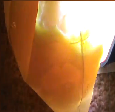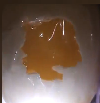Last time I did the Kordon breathing bag experiment and hatched out a little chick named Kordon. Also the same time I did the window project, the window project was me taking a section of the shell off to watch the chick grow inside the egg, but it only made it to day 16. Before last time when I did the Kordon breathing bag experiment and made it to day 19, but I never gave up and 2 months later tried again and had it hatch out. That showed to never give up and I think like last time, this can work.
Next is my new one I never tried is putting 2 duck eggs white and yoke in the same bag (Both Duck).
Old videos of my experiments- http://www.youtube.com/playlist?list=PLFA6E52942972B4DD&feature=edit_ok
Web Cam- http://www.mycampage.com/stephenchickenandgreenhousecam
Facebook Page - http://www.facebook.com/events/3742...ns-Chicken-and-Greenhouse-cam/149973155061889
Twitter- https://twitter.com/#!/steviepax
Sub to get updates
39 Chickens Hatched
11 Ducks hatched
Total 121 NEW REC!!!!!!!!!
(New Way To Hatch And Grow An Embryo Videos)
Getting Ready-
Day 0-
Day 1-
Day 2-
Day 3-
Day 4- http://www.youtube.com/watch?v=asEm0jDi7hA&feature=youtu.be
Day 5- http://www.youtube.com/watch?v=8NcNC91rHSY
Day 6- http://www.youtube.com/watch?v=1ViecNlkJCo
Day 7- http://www.youtube.com/watch?v=5ecpwVXzIQo&feature=youtu.be
Day 8- http://www.youtube.com/watch?v=WrA0SNDjwcc
Day 9- http://www.youtube.com/watch?v=6-zKO41rcgI
Day 10- http://www.youtube.com/watch?v=AcDVGWL4PfQ
Day 11- http://www.youtube.com/watch?v=hwwhD4TH7Iw
Day 12- http://www.youtube.com/watch?v=UWkdnQIqXoY
Day 13- http://www.youtube.com/watch?v=IQz6Qc7fLQw&feature=youtu.be
Day 14- http://www.youtube.com/watch?v=wFQkCYzTF78&feature=youtu.be
Day 15- http://www.youtube.com/watch?v=PAZ6dLrxjhk&feature=youtu.be
Day 16- http://www.youtube.com/watch?v=Jify39JoWHw
Day 17- http://www.youtube.com/watch?v=3VeAH2qqpS0&feature=youtu.be
Day 18- http://www.youtube.com/watch?v=SQazAb2q36Q&feature=youtu.be
(Hatching Time)
Day 19 Pipping- http://www.youtube.com/watch?v=9MU3M5aZZ2k
THE HATCH- http://www.youtube.com/watch?v=wIE7WRrxG4E&feature=youtu.be
Pictures Ducks
Day 0-

Day 1-

Day 2-

Day 3-

Day 4-

Day 5-

Day 6-

Day 7-

Day 8-

Day 9-

Day 10-

Day 11-

Ended Duck didnt make it, will put up next time.
Chicken Embryo Pics Day 0-18
https://www.backyardchickens.com/a/chicken-embryo-growing
Chicken During Incubation:
Day 1:
6 to 10 h - First kidney-like cells (pronephros) begin to form.
8 h -Appearance of primitive streak.
10 h -Yolk sac (embryonic membrane) begins. Functions include: a) blood formation; b) yolk digestion; c) yolk absorption; d) food provision after hatching. Mesoderm appears; embryo oriented at 90° angle to egg's long axis; mesonephros begins.
18 h -Primitive gut begins; primordial germ cells appear in germinal crescent.
20 h -Vertebral column begins.
21 h -Appearance of neural groove, nervous system.
22 h -Appearance of first pair of somites (block-like segments) and head.
23 to 24 h -Blood islands, vitelline (yolk sac) circulation, blood, heart,blood vessels begin (2 to 4 somites).
Day 2:
25 h -Appearance of eye; vertebral column visible; embryo begins to turn on left side (6 somites).
28 h -Ear begins (7 somites).
30 h -Amnion (embryonic membrane around embryo) begins. Primary function is to protect embryo against shock and sticking; also responsible for some albumen absorption. Chorion (embryonic membrane that fuses with allantois) begins; heartbeat begins (10 somites).
38 h -Cranial flexure and torsion evident; heartbeat moves blood (16 to 17 somites).
42 h -Thyroid begins.
48 h -Anterior pituitary and pineal glands begin to develop.
Day 3:
50 h -Embryo turns on left side; allantois (embryonic membrane that fuses with chorion) begins. Functions of chorioallantois are: a) respiration; b) albumen absorption; c) absorption of calcium from shell; d) storage of kidney excretions.
60 h -Nasal pits, pharynx, lungs, anterior limb buds begin.
62 h -Posterior limb buds begin.
72 h -Middle and outer ear, trachea begin; amnion completes growth around embryo.
Day 4: Tongue and esophagus begin; embryo separates from yolk sac; allantois grows through amnion; contractions occur in amnion wall; adrenal development begins; pronephros (nonfunctional kidney) disappears; metanephros (definitive or final kidney) begins; proventriculus, gizzard, ceca, large intestine begin. Pigment visible in eye (dark eye).
Day 5: Reproductive system and differentiation of sex appear; thymus, bursa of Fabricius, duodenal loop begin; chorion and allantois begin to fuse; mesonephros begins to function; first cartilage present.
Day 6: Beak appears; voluntary movement begins; chorioallantois (chorion fused with allantois) lies against shell near large end of egg.
Day 7: Digits appear; comb growth begins; egg tooth begins; melanin produced; absorption of mineral from shell begins. Chorioallantois is attached to inner shell membrane and growth around the inner surface is progressing.
Day 8: Father tracts appear; parathyroid begins; bone calcification begins.
Day 9: Growth of chorioallantois about 80% complete (still open at small end); mouth opening appears.
Day 10: Beak begins to harden; digits completely separated.
Day 11: Abdominal walls established; loops of intestine begin to protrude into the yolk sac; down feathers visible; comb and wattles visible; claws and scales appear on toes; mesonephros reaches maximum level of function, then begins to degenerate; metanephros begins to function.
Day 12: Chorioallantois completes enclosure of egg contents; embryo water content begins to decrease.
Day 13: Cartilaginous skeleton is relatively complete; embryo heat production and oxygen consumption begin to increase rapidly.
Day 14: Embryo begins to turn head toward large end of egg; long bone ossification becomes rapid. Turning of egg no longer essential.
Day 15: Intestinal loops easily seen in yolk sac; contraction of amnion ceases.
Day 16: Beak, claws, and scales relatively cornified; albumen is practically gone and yolk increasingly important as food source; down feathers cover body; intestinal loops begin to retract into body.
Day 17: Amniotic fluid decreases; embryo positioning head toward large end, toward right wing with beak toward air cell; definitive feathers begin.
Day 18: Blood volume decreases, total blood hemoglobin decreases. Embryo should be in proper position to hatch: embryo's long axis the same as long axis of egg; head in large end of egg; head to right and under right wing; beak pointed toward air cell; feet toward head.
Day 19: Intestinal loop retraction complete; yolk sac begins to enter body cavity; amniotic fluid (swallowed by embryo) disappears; beak may pierce air cell and lungs begin to function (pulmonary respiration).
Day 20: Yolk sac completely drawn into body; air cell pierced, followed by functioning of pulmonary respiration; embryo makes sounds; chorioallantoic circulation, respiration, and absorption decrease; embryo may pip shell.
Day 21: Hatching process: chorioallantoic circulation ceases; embryo breaks shell over air cell with egg tooth; embryo slowly rotates in egg counterclockwise, chipping and breaking shell as it does; embryo kicks and attempts to straighten neck, pushes shell open; kicks free of shell, rests, straightens, dries.
>Day 21: Some embryos are unable to hatch but survive beyond the normal hatching time.
Next is my new one I never tried is putting 2 duck eggs white and yoke in the same bag (Both Duck).
Old videos of my experiments- http://www.youtube.com/playlist?list=PLFA6E52942972B4DD&feature=edit_ok
Web Cam- http://www.mycampage.com/stephenchickenandgreenhousecam
Facebook Page - http://www.facebook.com/events/3742...ns-Chicken-and-Greenhouse-cam/149973155061889
Twitter- https://twitter.com/#!/steviepax
Sub to get updates
39 Chickens Hatched
11 Ducks hatched
Total 121 NEW REC!!!!!!!!!
(New Way To Hatch And Grow An Embryo Videos)
Getting Ready-
Day 5- http://www.youtube.com/watch?v=8NcNC91rHSY
Day 6- http://www.youtube.com/watch?v=1ViecNlkJCo
Day 7- http://www.youtube.com/watch?v=5ecpwVXzIQo&feature=youtu.be
Day 8- http://www.youtube.com/watch?v=WrA0SNDjwcc
Day 9- http://www.youtube.com/watch?v=6-zKO41rcgI
Day 10- http://www.youtube.com/watch?v=AcDVGWL4PfQ
Day 11- http://www.youtube.com/watch?v=hwwhD4TH7Iw
Day 12- http://www.youtube.com/watch?v=UWkdnQIqXoY
Day 13- http://www.youtube.com/watch?v=IQz6Qc7fLQw&feature=youtu.be
Day 14- http://www.youtube.com/watch?v=wFQkCYzTF78&feature=youtu.be
Day 15- http://www.youtube.com/watch?v=PAZ6dLrxjhk&feature=youtu.be
Day 16- http://www.youtube.com/watch?v=Jify39JoWHw
Day 17- http://www.youtube.com/watch?v=3VeAH2qqpS0&feature=youtu.be
Day 18- http://www.youtube.com/watch?v=SQazAb2q36Q&feature=youtu.be
(Hatching Time)
Day 19 Pipping- http://www.youtube.com/watch?v=9MU3M5aZZ2k
THE HATCH- http://www.youtube.com/watch?v=wIE7WRrxG4E&feature=youtu.be
Pictures Ducks
Day 0-

Day 1-

Day 2-

Day 3-

Day 4-

Day 5-

Day 6-

Day 7-

Day 8-

Day 9-

Day 10-

Day 11-

Ended Duck didnt make it, will put up next time.
Chicken Embryo Pics Day 0-18
https://www.backyardchickens.com/a/chicken-embryo-growing
Chicken During Incubation:
Day 1:
6 to 10 h - First kidney-like cells (pronephros) begin to form.
8 h -Appearance of primitive streak.
10 h -Yolk sac (embryonic membrane) begins. Functions include: a) blood formation; b) yolk digestion; c) yolk absorption; d) food provision after hatching. Mesoderm appears; embryo oriented at 90° angle to egg's long axis; mesonephros begins.
18 h -Primitive gut begins; primordial germ cells appear in germinal crescent.
20 h -Vertebral column begins.
21 h -Appearance of neural groove, nervous system.
22 h -Appearance of first pair of somites (block-like segments) and head.
23 to 24 h -Blood islands, vitelline (yolk sac) circulation, blood, heart,blood vessels begin (2 to 4 somites).
Day 2:
25 h -Appearance of eye; vertebral column visible; embryo begins to turn on left side (6 somites).
28 h -Ear begins (7 somites).
30 h -Amnion (embryonic membrane around embryo) begins. Primary function is to protect embryo against shock and sticking; also responsible for some albumen absorption. Chorion (embryonic membrane that fuses with allantois) begins; heartbeat begins (10 somites).
38 h -Cranial flexure and torsion evident; heartbeat moves blood (16 to 17 somites).
42 h -Thyroid begins.
48 h -Anterior pituitary and pineal glands begin to develop.
Day 3:
50 h -Embryo turns on left side; allantois (embryonic membrane that fuses with chorion) begins. Functions of chorioallantois are: a) respiration; b) albumen absorption; c) absorption of calcium from shell; d) storage of kidney excretions.
60 h -Nasal pits, pharynx, lungs, anterior limb buds begin.
62 h -Posterior limb buds begin.
72 h -Middle and outer ear, trachea begin; amnion completes growth around embryo.
Day 4: Tongue and esophagus begin; embryo separates from yolk sac; allantois grows through amnion; contractions occur in amnion wall; adrenal development begins; pronephros (nonfunctional kidney) disappears; metanephros (definitive or final kidney) begins; proventriculus, gizzard, ceca, large intestine begin. Pigment visible in eye (dark eye).
Day 5: Reproductive system and differentiation of sex appear; thymus, bursa of Fabricius, duodenal loop begin; chorion and allantois begin to fuse; mesonephros begins to function; first cartilage present.
Day 6: Beak appears; voluntary movement begins; chorioallantois (chorion fused with allantois) lies against shell near large end of egg.
Day 7: Digits appear; comb growth begins; egg tooth begins; melanin produced; absorption of mineral from shell begins. Chorioallantois is attached to inner shell membrane and growth around the inner surface is progressing.
Day 8: Father tracts appear; parathyroid begins; bone calcification begins.
Day 9: Growth of chorioallantois about 80% complete (still open at small end); mouth opening appears.
Day 10: Beak begins to harden; digits completely separated.
Day 11: Abdominal walls established; loops of intestine begin to protrude into the yolk sac; down feathers visible; comb and wattles visible; claws and scales appear on toes; mesonephros reaches maximum level of function, then begins to degenerate; metanephros begins to function.
Day 12: Chorioallantois completes enclosure of egg contents; embryo water content begins to decrease.
Day 13: Cartilaginous skeleton is relatively complete; embryo heat production and oxygen consumption begin to increase rapidly.
Day 14: Embryo begins to turn head toward large end of egg; long bone ossification becomes rapid. Turning of egg no longer essential.
Day 15: Intestinal loops easily seen in yolk sac; contraction of amnion ceases.
Day 16: Beak, claws, and scales relatively cornified; albumen is practically gone and yolk increasingly important as food source; down feathers cover body; intestinal loops begin to retract into body.
Day 17: Amniotic fluid decreases; embryo positioning head toward large end, toward right wing with beak toward air cell; definitive feathers begin.
Day 18: Blood volume decreases, total blood hemoglobin decreases. Embryo should be in proper position to hatch: embryo's long axis the same as long axis of egg; head in large end of egg; head to right and under right wing; beak pointed toward air cell; feet toward head.
Day 19: Intestinal loop retraction complete; yolk sac begins to enter body cavity; amniotic fluid (swallowed by embryo) disappears; beak may pierce air cell and lungs begin to function (pulmonary respiration).
Day 20: Yolk sac completely drawn into body; air cell pierced, followed by functioning of pulmonary respiration; embryo makes sounds; chorioallantoic circulation, respiration, and absorption decrease; embryo may pip shell.
Day 21: Hatching process: chorioallantoic circulation ceases; embryo breaks shell over air cell with egg tooth; embryo slowly rotates in egg counterclockwise, chipping and breaking shell as it does; embryo kicks and attempts to straighten neck, pushes shell open; kicks free of shell, rests, straightens, dries.
>Day 21: Some embryos are unable to hatch but survive beyond the normal hatching time.
Last edited:

